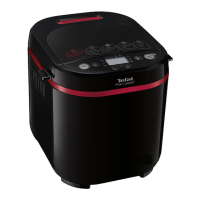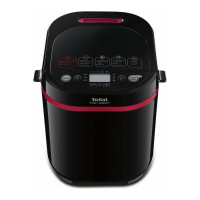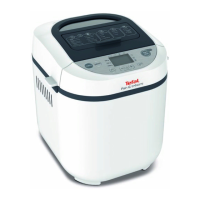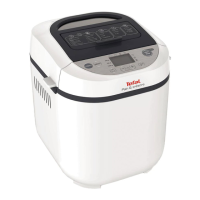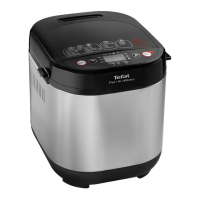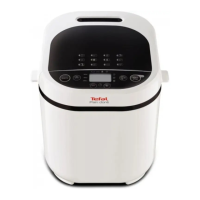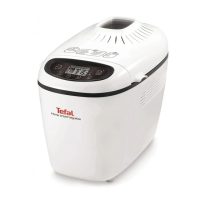1716
EN
Fermentation Agent
For the yoghurt
The fermentation agent may be:
• A plain yoghurt purchased in a store, whose use by date is the latest
one available.
• A freeze-dried fermentation agent or powdered lactic culture: In this
case, follow the fermentation duration indicated in the manufactuer’s
instructions for use. These types of ferment are available in some health
food stores or from the internet.
• One of your recently prepared yoghurts – this must be a plain yoghurt,
the most recent possible. This process is called a “culture”.
The properties of the ferment agent may be destroyed by overly
elevated temperatures.
Fermentation Time
• Depending on the basic ingredients used and the desired result, the
fermentation of the yoghurt will take between 7 and 12 hours.
Once the the program has finished, put the yoghurt in the refrigerator for
at least 4 hours, and consume it within 7 days.
TIPS FOR MAKING YOGURT
• All the equipment used in the yogurt making process should be sterilised
using Milton sterilizing fluid. Sterilising is important to prevent the
introduction of undesirable airborne organisms which could interfere with
the incubation of the culture, and results in runny yogurt which will not set.
• Remove the kneading paddle from the bread pan. Place the yogurt pot
in the pan, without the lid or cheese filter.
• Prepare the yogurt mixture as instructed in the recipe book supplied
with your appliance. Also see the section “Choice of milk” on page 15.
• You can sweeten natural yogurt either when you eat them or when you
make them. After the yogurt is cooked, simply stir in some caster sugar
or honey. Alternatively, when preparing the yogurt mixture dissolve the
sugar after boiling the milk or dissolve in the cold UHT milk. Use no more
than 60 g caster sugar for 750 ml milk.
• The Yogurt program has an adjustable cooking time from 7 hours to a
maximum of 16 hours.
Liquid
7 hrs. 8 hrs. 9 hrs. 10 hrs. 11 hrs. 12 hrs.
Firm
Sweet Sour
• Unplug the appliance and wait for it to cool
down completely.
• Wash the pan and the kneading paddle using
hot soapy water. If the kneading paddle is stuck
in the pan, soak it for 5 to 10 min.
• Clean the body of the appliance with a damp
cloth sponge only, without any cleaning
products. Dry thoroughly.
• Don’t use any household cleanser, abrasive pads or alcohol. Only use a
soft, damp cloth.
• The appliance and removable parts including the yogurt pot, lid and
cheese drainer are unsuitable for cleaning in a dishwasher.
• Never submerge the appliance's body or the lid in water or any other liquid.
• When the yogurt cooking process has finished, label up the yogurt with
the date it needs to be used. Allow to cool completely, cover with the lid.
Chill in the refrigerator for at least 4 hours, preferably overnight, before
serving. This helps the yogurt to thicken slightly.
• Natural yogurts will keep for a maximum of 7 days in the refrigerator,
depending on the freshness of the milk. Yogurts with jam or additional
ingredients added will keep for up to 3 days.
• Homemade yogurts do not contain the thickeners and stabilisers
contained in commercially produced yogurt and are often thinner in
consistency. Sometimes homemade yogurt has nutritious clear whey on
top which can be stirred back in. Alternatively, you can pour it o.
• Homemade natural yogurt can be flavoured with fresh fruit or cold
cooked stewed fruit after preparation and chilling. If the fruit is added
before fermentation the fruit acids interfere with the setting process
and the yoghurts will be very runny. Some very acidic fruits, such as fresh
pineapple, can cause the prepared yogurt to curdle or separate. Acidic
fruit is best served in a separate bowl.
MAKING SOFT CHEESE IN YOUR BREADMAKER
Rennet (for soft white cheese)
To make your cheeses, you can use some rennet (available in some large
supermarkets and in health food stores) or an acidic liquid such as lemon
juice or vinegar to curdle the milk.
CLEANING AND MAINTENANCE
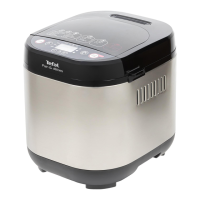
